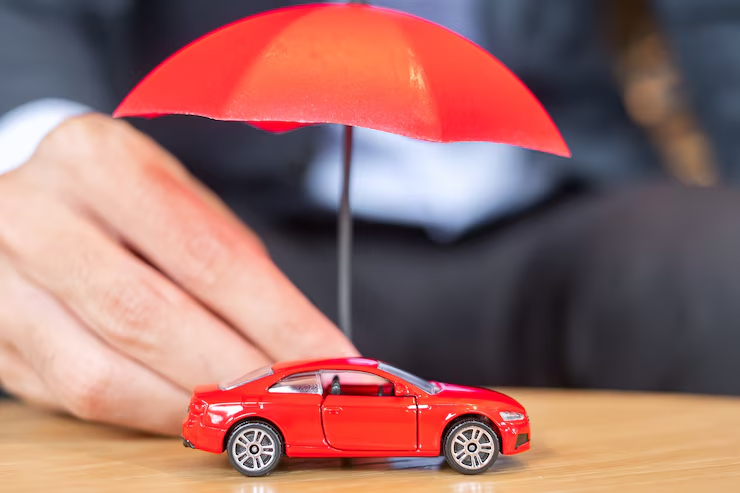Car Insurance Explained: Tips For Finding The Best Coverage
Car insurance is a crucial part of being a responsible car owner. Whether you’re a new driver or someone who’s been on the road for years, finding the right car insurance can be confusing. With so many options available and different factors to consider, it’s easy to feel overwhelmed. This article will explain the basics of car insurance, the different types of coverage available, and tips for finding the best coverage for your needs.
What Is Car Insurance?

Car insurance is a contract between you and an insurance provider that protects you financially in the event of an accident, theft, or other incidents involving your vehicle. It ensures that you don’t bear the full financial burden of a car-related event. In exchange for regular premiums, your insurance company will cover certain costs if something happens to your car or if you’re at fault in an accident.
In many countries, car insurance is required by law. Most jurisdictions require that you carry at least a minimum amount of coverage. The minimum requirements vary by state or country, so it’s important to know the laws in your area.
Types of Car Insurance Coverage
Understanding the different types of car insurance coverage is key to determining what you need. The most common types include:
1. Liability Insurance
Liability insurance is the most basic form of car insurance and is often the minimum requirement in many regions. This coverage protects you if you’re at fault in an accident and cause damage to another person’s property or injury to another person. Liability insurance is broken down into two components:
- Bodily Injury Liability: Covers medical expenses for injuries to others.
- Property Damage Liability: Pays for the damage to someone else’s property.
2. Collision Insurance
Collision insurance covers the cost of repairing or replacing your own vehicle if it’s damaged in an accident, regardless of who is at fault. If you’re in a collision with another vehicle or an object (like a tree or guardrail), this coverage helps pay for the repairs.
3. Comprehensive Insurance
Comprehensive coverage protects you against damage to your car that doesn’t involve a collision, such as theft, vandalism, fire, or natural disasters. For example, if your car is damaged in a hailstorm, comprehensive insurance would help pay for repairs.
4. Personal Injury Protection (PIP)
PIP, also known as no-fault insurance, helps pay for medical expenses and lost wages if you or your passengers are injured in an accident, regardless of who is at fault. It may also cover funeral expenses and other related costs.
5. Uninsured/Underinsured Motorist Coverage
This coverage protects you if you’re involved in an accident with a driver who doesn’t have insurance or doesn’t have enough coverage to pay for the damages. It helps cover medical bills and repair costs when the other driver’s insurance falls short or if they don’t have insurance at all.
6. Medical Payments Coverage (MedPay)
MedPay is similar to PIP but is usually more limited. It covers medical expenses for you and your passengers in the event of an accident, regardless of fault. This coverage is not required in most areas but can be beneficial if you don’t have health insurance.
7. Gap Insurance
Gap insurance helps if your car is totaled in an accident and you owe more on your car loan or lease than the vehicle is worth. It covers the “gap” between the car’s value and the remaining loan balance.
How to Find the Best Car Insurance Coverage

Finding the right car insurance for your needs can be a challenging process, but by following a few key steps, you can make sure you get the best coverage at the best price.
1. Determine Your Coverage Needs
The first step in finding the best car insurance is to determine what kind of coverage you need. Consider the following factors:
- Your car’s value: If your car is older and has a low market value, you may not need comprehensive or collision insurance. However, if your car is new or expensive, you may want to protect it with these coverages.
- Your driving habits: If you drive frequently or in high-traffic areas, you might want more coverage to protect yourself in case of an accident.
- Your state’s requirements: Make sure you meet the minimum coverage requirements for your state or country. These vary from place to place, so check with your local laws.
2. Compare Insurance Quotes
Don’t settle for the first insurance quote you receive. Get quotes from multiple insurers to compare prices and coverage options. Different companies may offer different rates, so it’s worth taking the time to shop around. You can get quotes online, over the phone, or by visiting insurance offices in person.
3. Check the Insurer’s Reputation
While price is important, it’s also vital to choose an insurer with a good reputation for customer service and claims handling. Look for customer reviews and ratings on websites like J.D. Power, Consumer Reports, and the Better Business Bureau (BBB). Research how quickly they respond to claims and how easy it is to file a claim.
4. Consider the Deductible
The deductible is the amount you must pay out-of-pocket before your insurance policy kicks in. A higher deductible often means lower premiums, but it also means you’ll have to pay more if you’re in an accident. Weigh the pros and cons of different deductible amounts to find a balance that fits your budget.
5. Look for Discounts
Many insurance providers offer discounts that can lower your premiums. Some common discounts include:
- Safe driver discount: For drivers with a clean driving record.
- Bundling discount: For customers who bundle multiple insurance policies (e.g., car and home insurance).
- Anti-theft device discount: For vehicles equipped with security systems.
- Low mileage discount: For drivers who don’t use their cars often.
Be sure to ask your insurer about available discounts.
6. Review the Policy Terms
Make sure to carefully review the terms and conditions of your insurance policy before signing. Understand the limits of coverage, exclusions, and any additional fees. Pay close attention to what’s covered and what’s not. For example, some policies may not cover certain types of damage or may limit the amount paid out for repairs.
Also Read : Health Insurance: A Guide To Finding The Right Plan
Conclusion
Finding the right car insurance is crucial for protecting yourself and your vehicle. While it can be confusing at first, taking the time to understand the types of coverage available, comparing quotes, and choosing the right policy for your needs will ensure you’re well-covered in case of an accident. Remember to review your policy regularly to make sure your coverage is up to date.
FAQs
What is the minimum amount of car insurance required by law?
The minimum required amount of car insurance varies by state or country. In the U.S., most states require liability insurance, which covers bodily injury and property damage caused to others. Check your local laws to determine the exact minimum coverage requirements.
Can I switch car insurance providers at any time?
Yes, you can switch car insurance providers at any time. However, it’s important to ensure there’s no lapse in coverage between your old policy and your new one. Also, be aware of cancellation fees or penalties that may apply when switching insurers.
How can I lower my car insurance premiums?
To lower your premiums, you can increase your deductible, drive safely, bundle your insurance policies, install anti-theft devices, or take advantage of available discounts. Comparing quotes from different insurers is also a good way to find lower rates.
What happens if I drive without insurance?
Driving without insurance is illegal in most places and can result in fines, license suspension, and even jail time. If you’re in an accident without insurance, you’ll be responsible for all repair costs, medical bills, and legal fees.
What does “full coverage” insurance mean?
“Full coverage” insurance typically refers to a combination of liability insurance, collision insurance, and comprehensive coverage. While it offers more protection than basic liability insurance, it may not cover everything, so it’s important to review your policy carefully.







